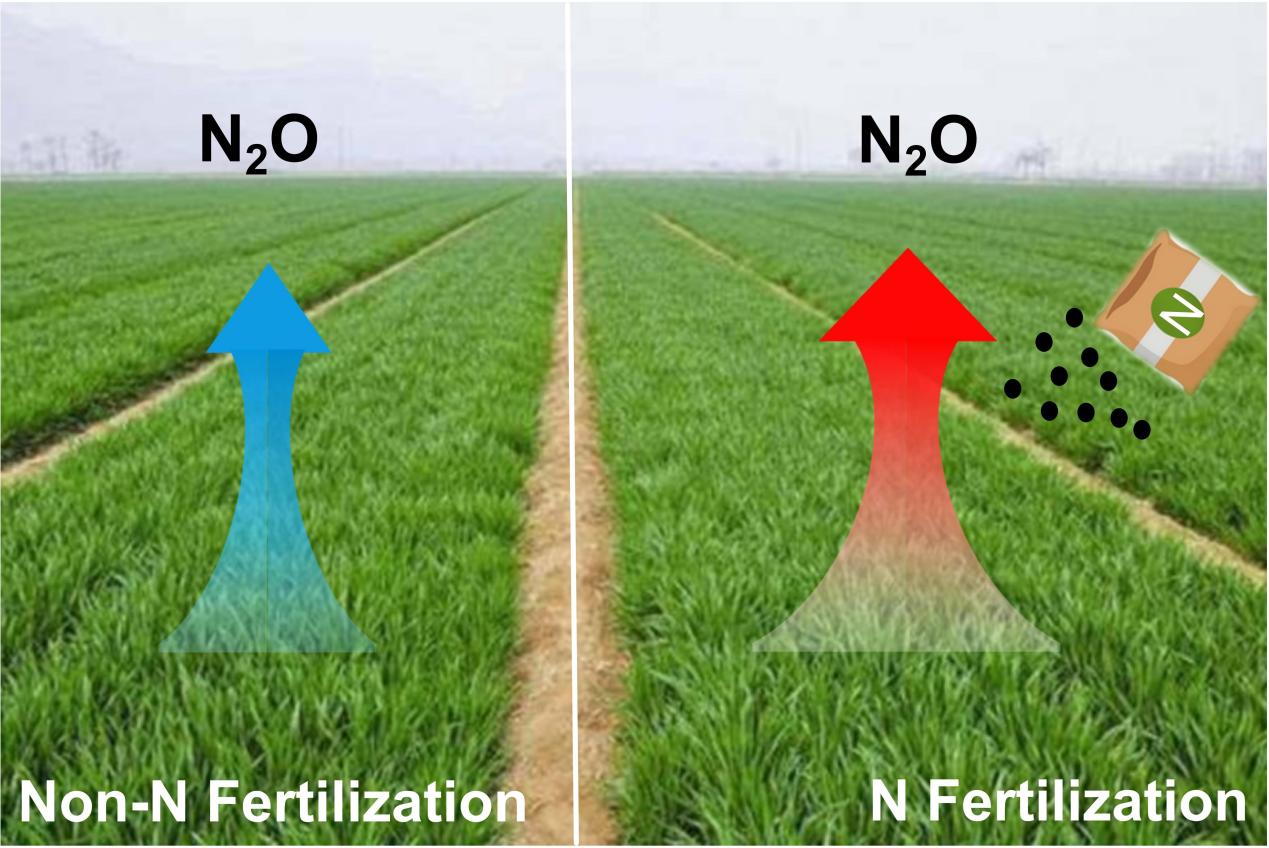Study Refines Understanding of Factors Influencing Global N2O Emissions from Agricultural Soils
Date:2024-07-23
Global atmospheric N2O concentration has surged by over 23% since the pre-industrial era, rising from 270 parts per billion (ppb) in 1750 to 336 ppb in 2022. Approximately two-thirds of these emissions come from nitrogen fertilizer-applied soils and natural soils. Key factors influencing N2O emissions include climate, soil properties, and agricultural practices.
A team of researchers from various institutions in China and Germany has refined the hierarchical structure of these factors at a global scale. Their findings, published in Advances in Atmospheric Sciences, provide new insights into the main drivers of N2O emissions from agricultural soils.
The team conducted correlation and structural equation modeling analyses on a global N2O emission dataset to explore the influence of climate, soil properties, and agricultural practices on N2O emissions from both non-fertilized and fertilized upland farming systems. Additionally, they performed variance partitioning analysis to identify the primary controlling factors in different climatic zones.

N fertilizer stimulated N2O emission from agricultural soils, whose key influence factors vary under different climate conditions. (Image by LI Siqi)
The study concluded that climatic factors, such as mean annual precipitation (MAP) and mean annual air temperature (MAT), are the principal influences on N2O emissions from non-fertilized upland soils. “In contrast, agricultural practices are the most influential factors for fertilized upland soils on a global scale.” Said one of the corresponding author Dr. LI Siqi from the Institute of Atmospheric Physics (IAP) at the Chinese Academy of Sciences, “However, the key factors affecting N2O emission intensity vary under different climate conditions.”
For non-fertilized treatments, soil physical properties contributed most to N2O emission intensity in the subtropical monsoon zone (23%), while climate factors (MAP and MAT) were dominant in the temperate continental (22%) and monsoon (23%) zones. For fertilized treatments, soil physical properties had the greatest impact in the subtropical monsoon (26%) and temperate continental (28%) zones, whereas agricultural practices were most significant in the temperate monsoon zone (17%).
“Our study also suggests that proper agricultural management practices, such as reducing nitrogen fertilizer rates combined with the addition of nitrification and urease inhibitors, can potentially mitigate N2O emissions by more than 60% in upland farming systems.” Said Dr. LI Yong, also the corresponding author of the study.
This research was conducted by a team from the Institute of Subtropical Agriculture and the State Key Laboratory of Atmospheric Boundary Layer Physics and Atmospheric Chemistry/IAP at the Chinese Academy of Sciences, Nanning Normal University, Soochow University, Central China Normal University, and the Leibniz Institute of Freshwater Ecology and Inland Fisheries in Germany.
Citation: Jiang, W. Q., S. Q. Li, Y. Li, M. H. Wang, B. Wang, J. Liu, J. L. Shen, and X. H. Zheng, 2024: Refining the factors affecting N2O emissions from upland soils with and without nitrogen fertilizer application at a global scale. Adv. Atmos. Sci., https://doi.org/10.1007/s00376-024-3234-7.
Media contact:
Ms. LIN Zheng
Email: jennylin@mail.iap.ac.cn
Tel: 86-10-82995053
http://english.iap.cas.cn/
